
Primarily, there have been four types of RV roofs: Aluminum, Fiberglass, Vinyl, Rubber TPO, and Rubber EPDM. If we fully understand where to check, we’ll be able to tell which one of the four materials our RV is made from.
RV roofs come in a variety of materials, each of which must be cleaned, treated, and sealed uniquely. While it’s understandable that we all desire our RVs to look their best, we realize that not every material requires the same cleaning supplies.
It’s a piece of cake once you know what you’ve got. If you follow the manufacturer’s instructions for cleaning, treating, and sealing your RV’s roof, you may sleep soundly knowing that your roof will last as long as the wheels can go!
We’ll walk you through the process of identifying the type of RV roofing material that’s on your RV so that you can use the necessary cleaners, sealants, and procedures for the task.
Types of Roofs on RVs
- Aluminum roof
- Fiberglass roof
- Vinyl
- Rubber TPO roof
- Rubber EPDM roof
If you own a recreational vehicle or camper, you might also be asking what kind of roof it has. Fiberglass and Aluminum roofs, to put it simply, are tough. Aluminum, on the other hand, is a metal, and fiberglass is not.
Vinyl resembles rubber in appearance and feel, but it will not pinch when squeezed. You can bet that if your roof isn’t made of fiberglass, metal, or vinyl, it is made of rubber.
Advantages and Disadvantages of RV Roof Types
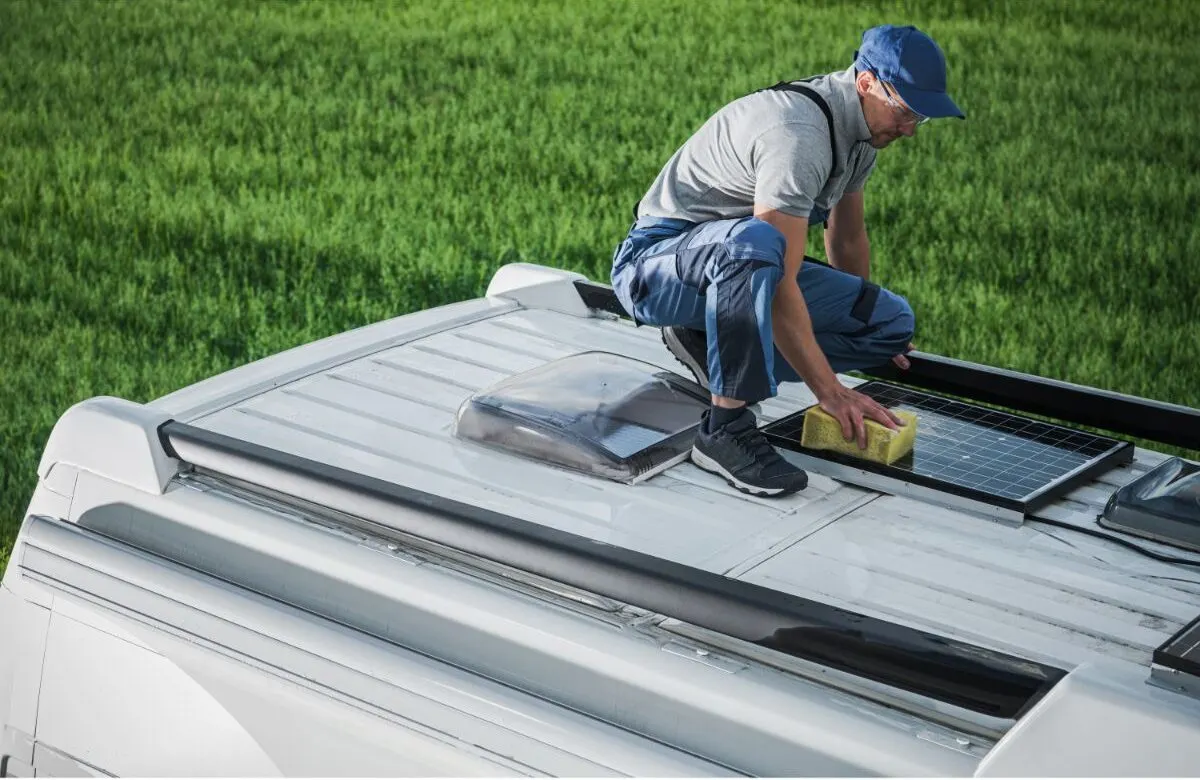
The advantages and cons of each style of RV roof are distinct. No one has it all.
Because of this, and the fact that individual preferences exist, it is quite difficult to identify the finest RV roof for all RVers.
However, there are a few things to keep in mind before making a decision. Check out a few of these, shall we?
Related: 10 Reasons Your RV Roof May Be Leaking
Aluminum RV Roof
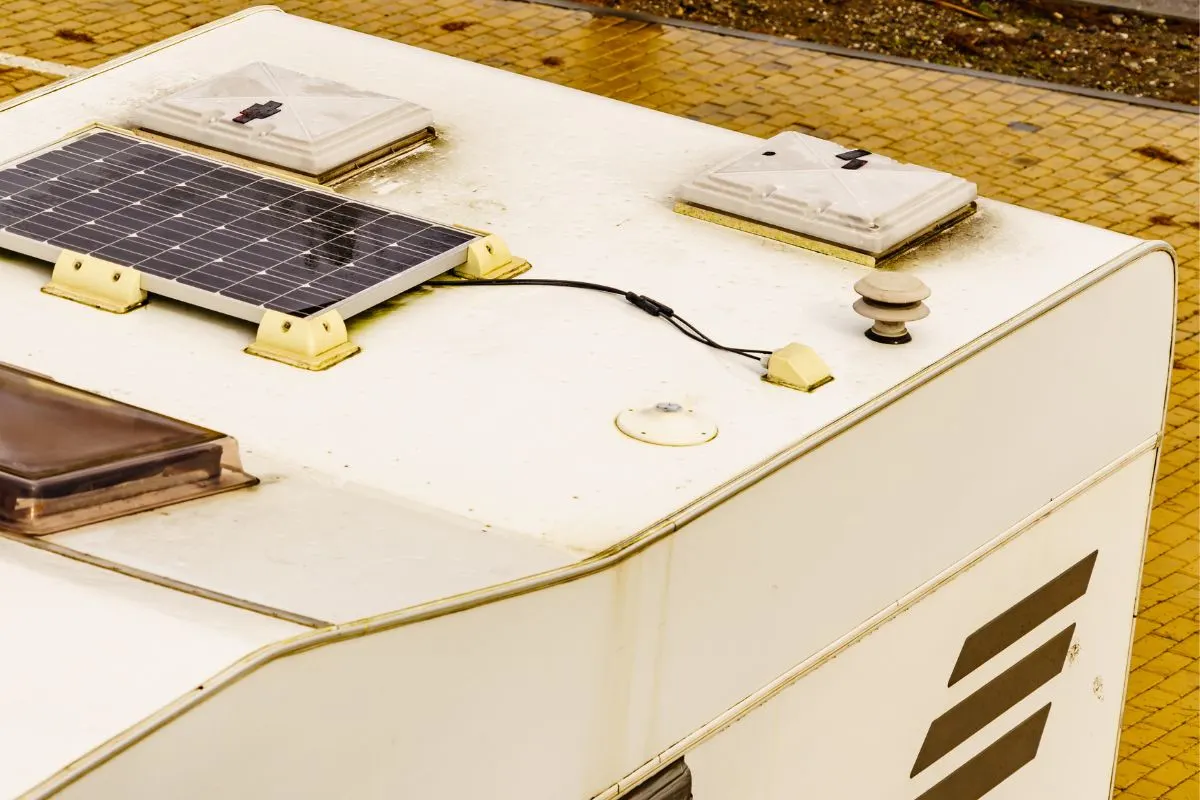
For RV roofs, aluminum may be the most unusual material. It’s easy to maintain, but it adds weight to the car.
Pros
- Longevity across a wide price range.
- The ability to endure being pierced by a tree limb.
- Frictional holes are less likely to form.
Cons
- It has no heat resistance.
- It doesn’t stick well to the glue.
Fiberglass RV Roofing
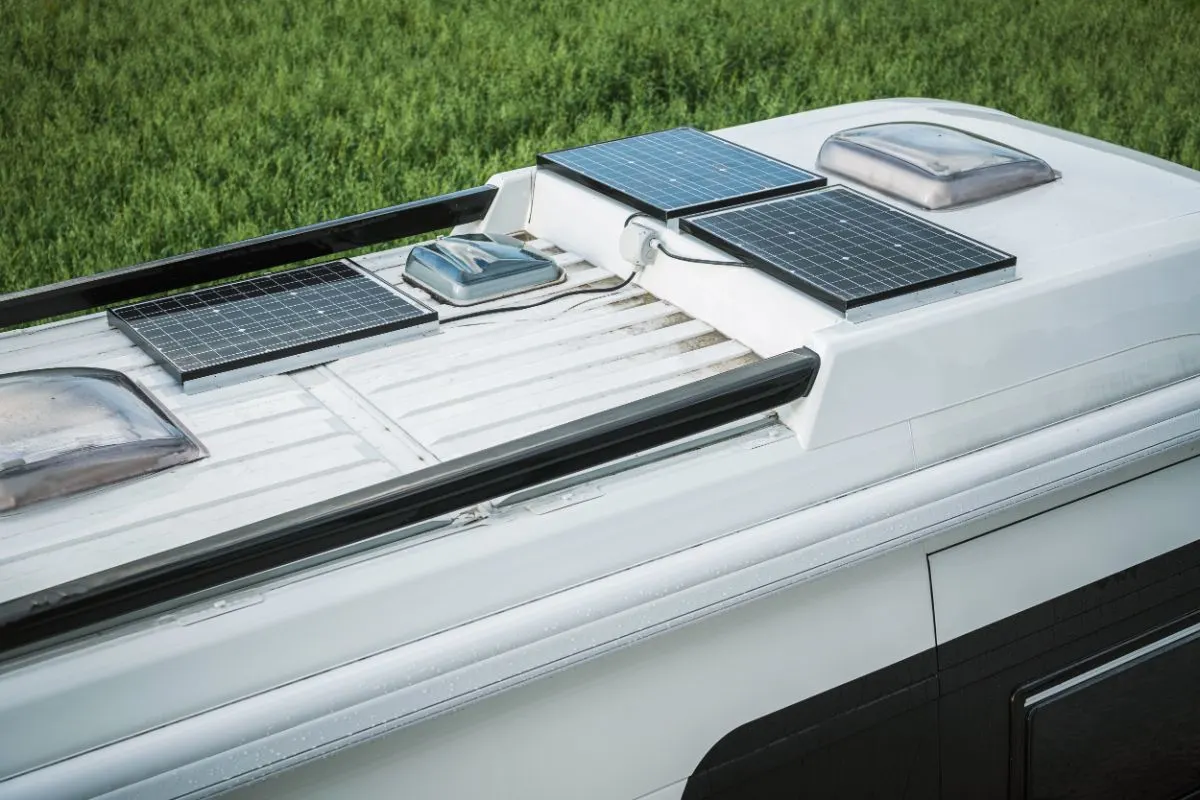
Fiberglass RV roofs are more difficult to come by than Rubber TPO and EPDM roofs. Glass fibers and synthetic materials are combined in big panels to make them.
Thick and cold to the touch, fiberglass roofs are common. It’s also more expensive than the other two kinds of RV rubber roofs, but it’s much more resistant to branches and hail than the other two.
Pros
- It is extremely resilient and has a low danger of being damaged.
- Corrosion, decay, and flames are not able to penetrate its exterior walls or surface.
- It’s light and aesthetically beautiful, therefore, it’s a good choice.
Cons
- Reparations are both more time-consuming and expensive.
- Thermal splits can occur when the material is overheated.
PVC RV Roofing
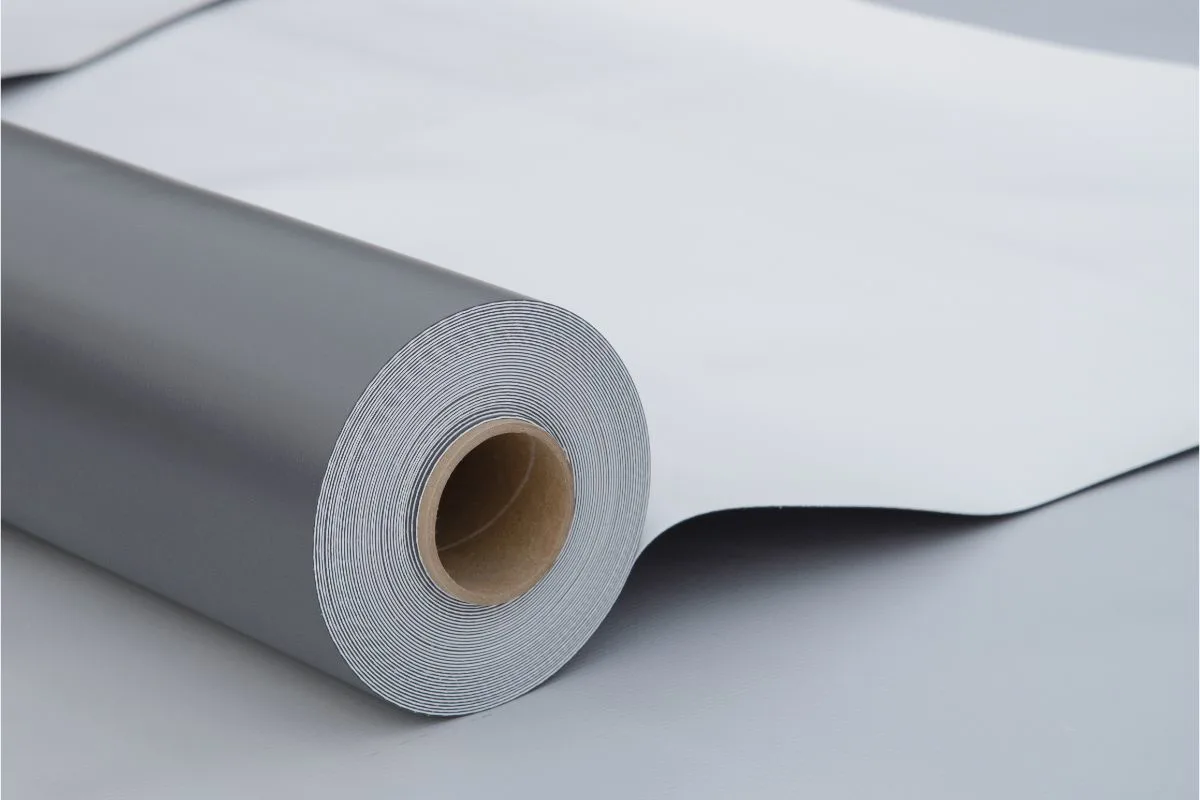
Polyvinyl chloride (PVC) is a common substance used in plumbing and other indoor applications. PVC roofing, on the other hand, is not identical to these pipes.
To make the PVC more suitable for an RV roof, additional parts are employed, and the roofing is sometimes reinforced with a “membrane.”
Pros
- Your money will be saved in the long run because it’s durable. Investing time and effort in your RV maintenance can then be redirected to other parts of the RV.
- It’s watertight, so you don’t have to keep going back in and patching holes all the time to keep it safe from the weather.
- Because it has a high level of reflectivity, it saves energy.
- It’s built to withstand flames.
Cons
- Expensive to Start
- Age and climate-related issues: As the lifespan of a PVC roof increases, so does the cost of maintenance and repairs. PVC that is more than a decade old is difficult to fix.
New sealants and hot air welds don’t hold up as well on aging roofs, and they wear out considerably more quickly. However, if your roof is in good overall condition, competent workers should be able to overcome these difficulties.
- It is necessary to remove the old roof completely. The contractor might need to clear away the old roof before installing PVC roofing. After all, the correct adhesion of this substance necessitates a flat, clean surface.
Of course, more labor costs are inevitable. Make sure you get a company that doesn’t cut corners when it comes to installing a PVC roof.
Rubber EPDM RV Roofing
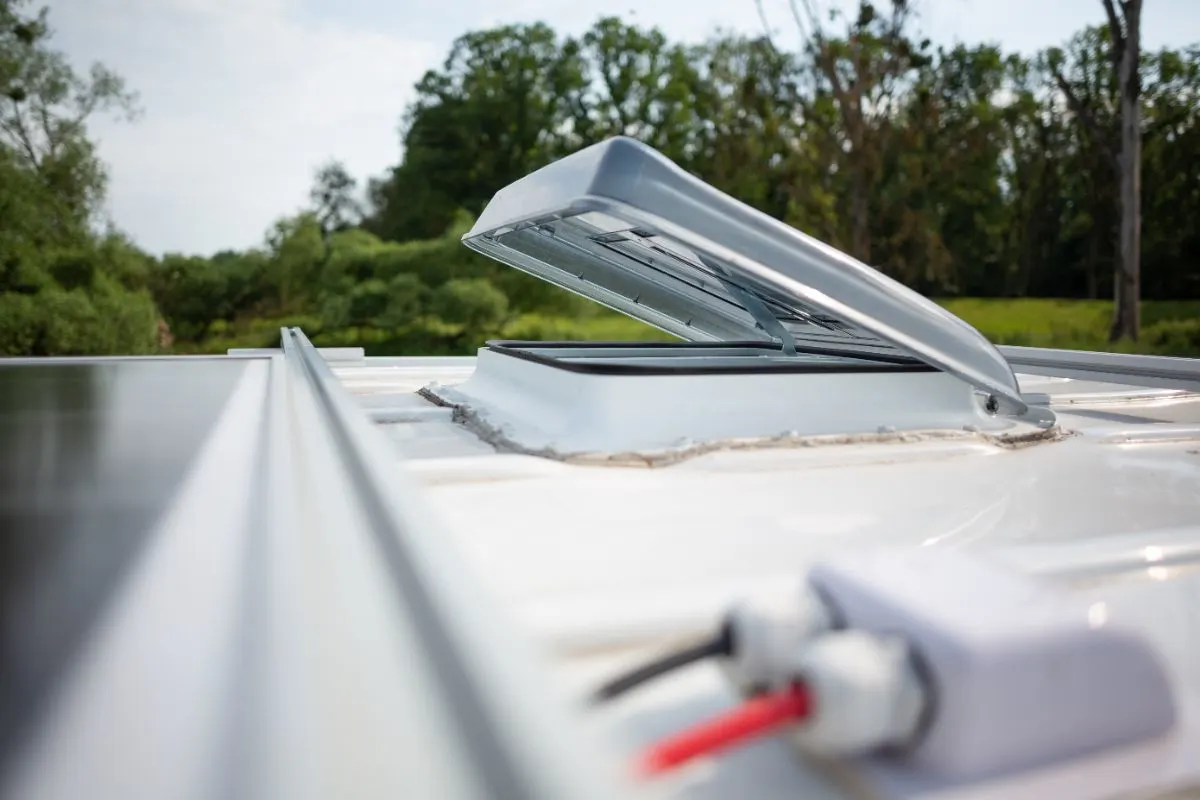
Flat RV roofs are commonly constructed using this sort of membrane rubber. This style of RV roof is quite popular because of its lightweight and simple installation process.
Pros
- Installing it is a breeze.
- Reduce the strain on your car by using this lightweight option.
- It is resistant to scratches, dents, and scrapes.
- Repairs and upkeep are a breeze.
Cons
- Compared to other options, this absorbs more heat.
- A low-hanging branch might easily penetrate it.
TPO Rubber RV Roof
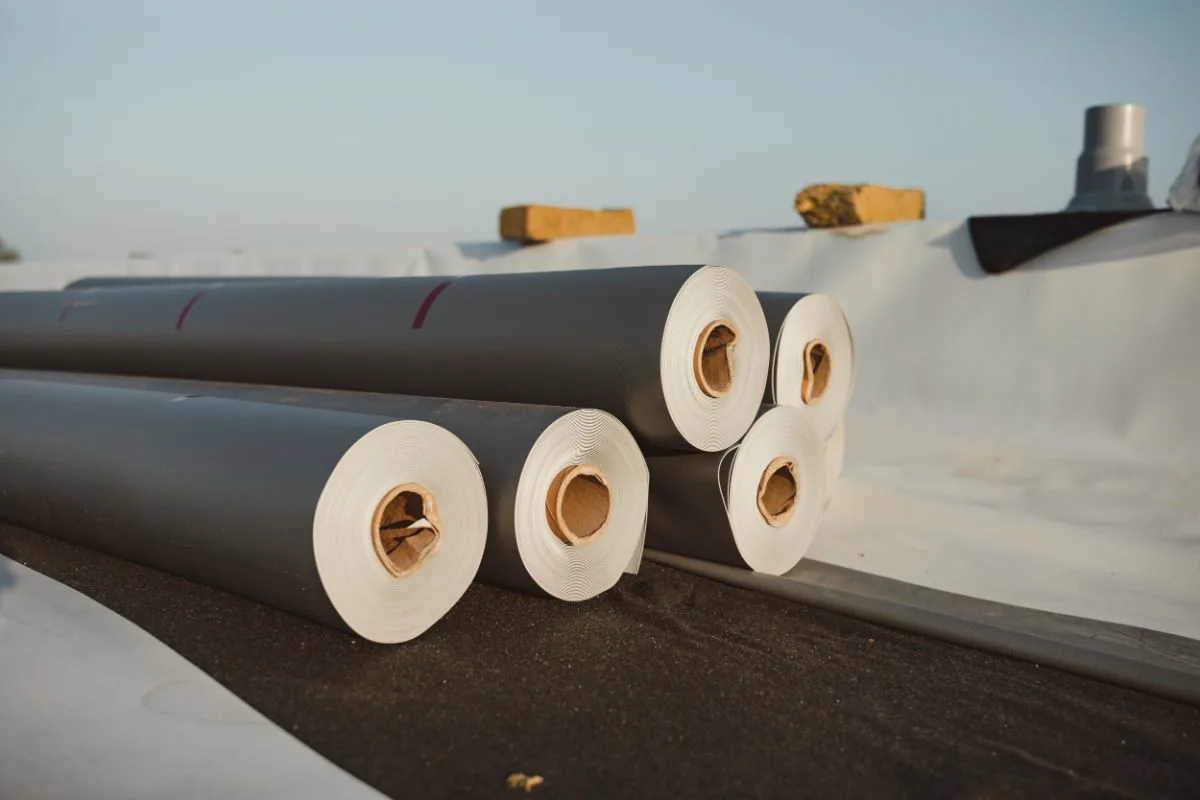
TPO means Thermal PolyOlefin and is one of the most used roofing materials for RVs nowadays. As a single-ply product, its variety in installation possibilities is a major reason for its current appeal. TPO roofing can also be found on commercial flat roofs, and it’s extremely long-lasting and weatherproof.
Pros
- Reflecting heat is made easier by the material’s white tone.
- A range of installation methods is available to meet the needs of the user.
- It’s not out of reach for most people’s budgets.
Cons
- It’s inconsistent in terms of quality, and how long it lasts depends on the manufacturer.
- Fiberglass and aluminum, on the other hand, are more resistant to wear and tear.
What is the Most Ideal RV Roof on the Market?
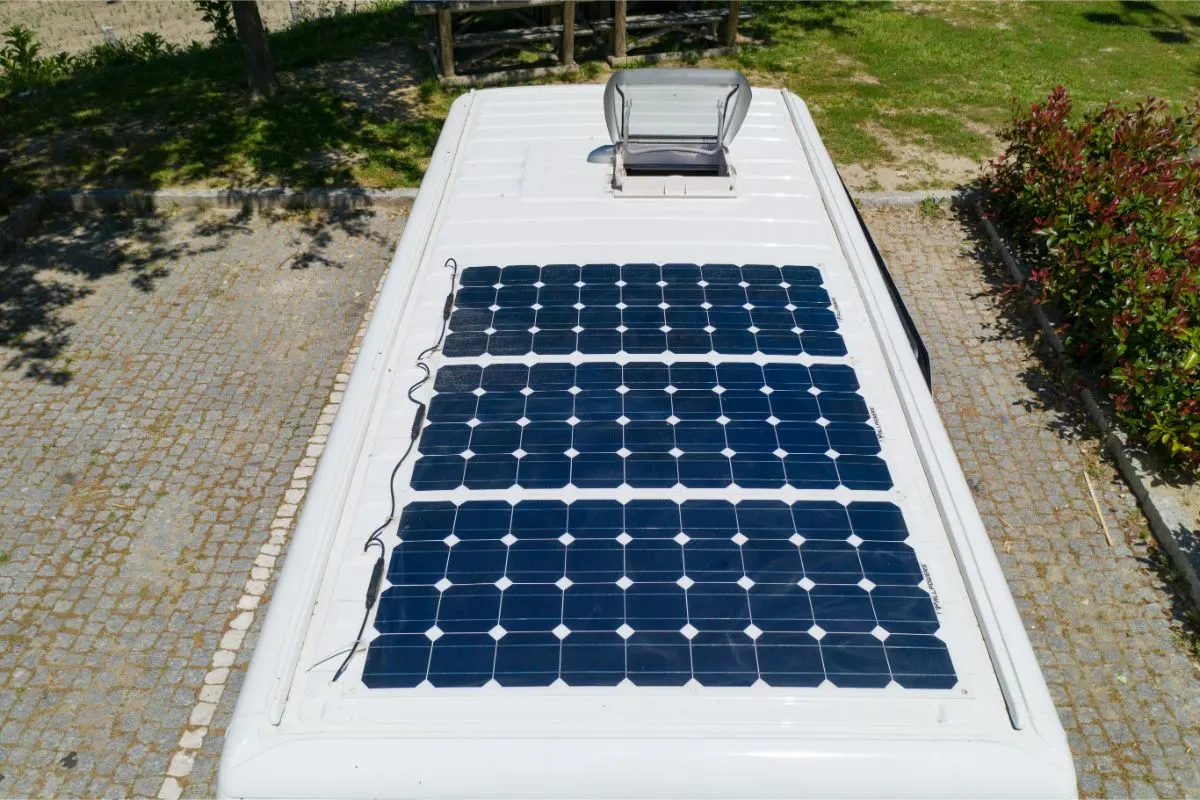
The roof of an RV is one of the most important aspects of RV ownership. You’ve probably given a lot of thought to what sort of RV roof you should get.
That’s because your motorhome’s lifespan, leakproofness, and comfort are all directly tied to the roof.
RV roofs can help keep you and your belongings dry in the rain, but they begin to deteriorate as soon as you leave the lot due to the sun’s rays and other environmental factors.
When you’re ‘traveling’ in an RV, it can also provide adequate protection from other harmful agents and surprise threats. This is one reason why RV owners are so preoccupied with their roofs, among a slew of others.
Rubber EPDM roofs are widely considered to be the best RV roofs on the market. In comparison to fiberglass or aluminum roofs, they are less expensive to repair or replace, more durable and come with a warranty of at least 10 years. They are also more common and less expensive to replace.
Determining What Type of RV Roof You Have
Both types of rubber roofs have distinct maintenance requirements. If you have a rubber roof on your RV, you may learn how to recognize what type of roof it is and what maintenance it needs.
Rubber roofs are lighter and less expensive than asphalt roofs. They are the most recent form of RV as well as camper roofs. Repair businesses frequently replace fiberglass roofs with rubber, according to reports from campers.
Replacement of a rubber roof is cheaper than replacing a fiberglass roof, which can cost thousands of dollars. The cost of replacing a TPO rubber roof may simply be a few hundred dollars. Retaining a rubber roof in good condition will extend its lifespan for many years.
Why are Rubber Roofs Popular on RVs?
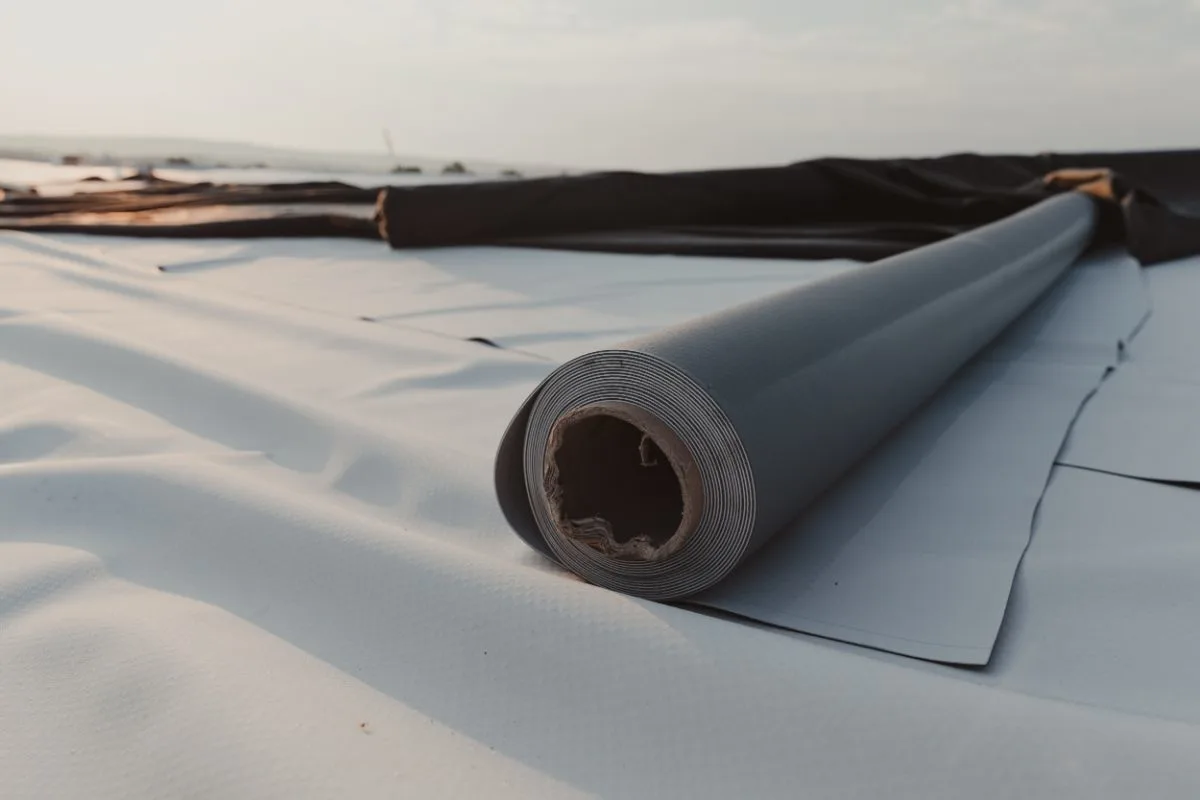
When I decided to inspect my camper’s rubber roof to see whether it required any repairs, I questioned why rubber roofs have become more popular on RVs and campers.
There are several explanations for this. Roofs made of rubber are lighter, less prone to slipping, and less susceptible to weather damage.
Various Rubber Roof Types
TPO, as well as EPDM, are the two most common rubber roofing. “EPDM” is an abbreviation for Ethylene Propylene Diene Monomer. Thermal polyolefin (TPO) is a synthetic rubber that is commonly used on RV roofs.
Finding out what kind of rubber roof you have is critical if you want to properly maintain it.
Always consult the RV or camper owner’s manual to determine the sort of rubber roof it has. You can tell if your roof is TPO or EPDM without consulting the owner’s manual or any other documentation.
Having an EPDM roof is a sure sign that you’ll be protected from the sun’s harmful rays if you see streaks of white or gray running down the sides of your RV or camper.
Over a decade, fewer than 10% of your rubber roof will be shed, which should not damage its lifespan, but it still needs annual care like any other roof.
Determining the Type of RV Rubber Roof
When determining the sort of rubber roof you have using a second method, use caution. When it rains, an EDPM rubber roof becomes dangerously slick, but a TPO roof doesn’t. Also, TPO is glossier than EPDM.
The texture of your RV or camper’s roof may also reveal information about the type of roof that it has. In comparison to TPO’s orange peel-like texture, EPDM is extremely smooth. EPDM rubber roofs can also develop a powdery appearance with time.
Don’t presume a rubber roof just because it’s not aluminum or fiberglass. Roofing vinyl is often used on campers and recreational vehicles. Give the roof a pinch to see if it’s made of vinyl.
A vinyl paper won’t stick to itself. The bottom line is that if you’re still unsure about the roofing material on your camper or RV, take it to an RV repair shop and ask them.
Repairing and Sealing a Rubber RV Roof
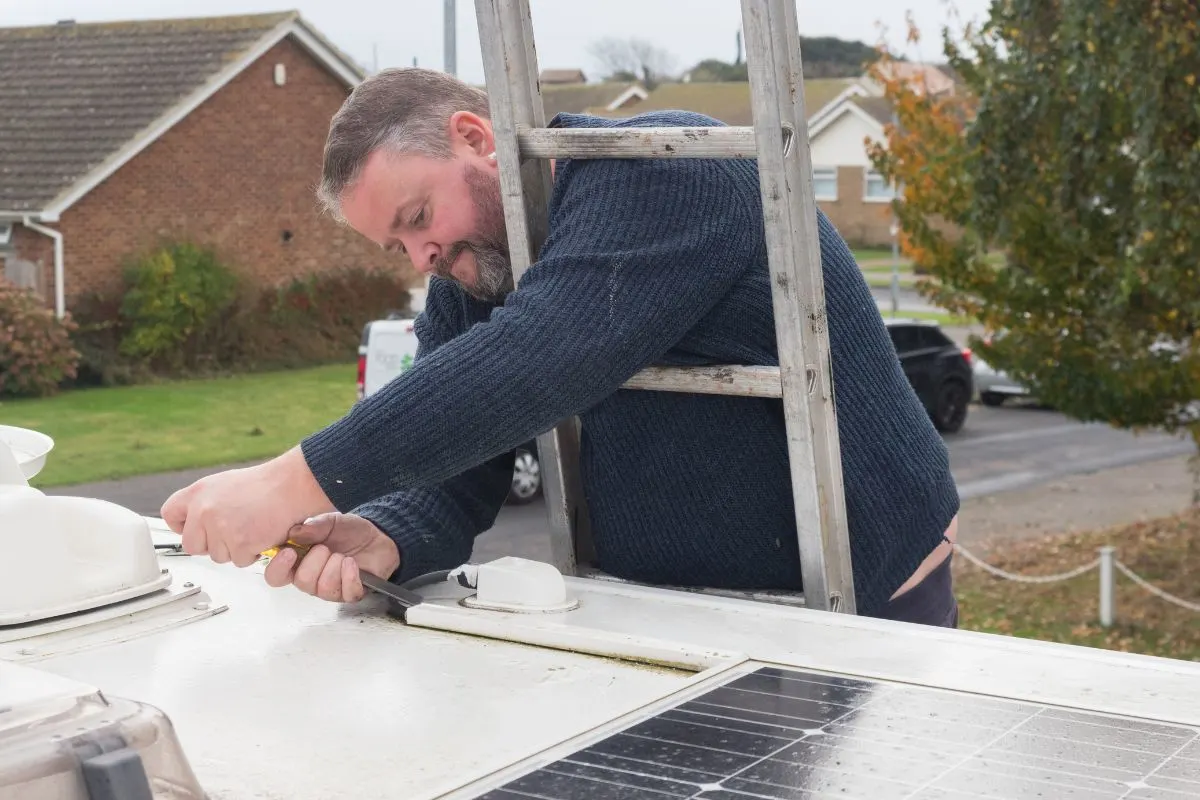
Even though fiberglass and aluminum roofs also necessitate regular cleaning and visual examination, in addition to being more expensive, rubber roofs have a higher maintenance requirement.
When cleaning or performing a detailed visual inspection on the top of your RV or camper, make sure you wear shoes with a soft sole. EPDM and TPO roofs should not be cleaned with harsh, abrasive cleaners, chemicals containing petroleum distillates, or citrus compounds.
Rubber EPDM Roofing: Care and Maintenance
Keeping an EPDM roof in good condition requires regular cleaning. Cleanup and conditioning must be performed more frequently in warmer regions because of the increased risk of mold and mildew growth.
To begin, remove any loose material from the roof by sweeping it away. Mop the roof with a sponge mop and a bucket of water.
Dishwashing detergents have been recommended by certain campers. If rubber roof cleaning is more to your taste, Dicor offers a solution. Petroleum distillates should be avoided in all household cleaners.
When you have finished mopping, use a garden hose to thoroughly rinse the floor. Before you clean the RV or camper, you can cover the RV or camper’s sides with plastic to prevent black streaks down the sides, which will save you time later.
Caulking Your RV Roof
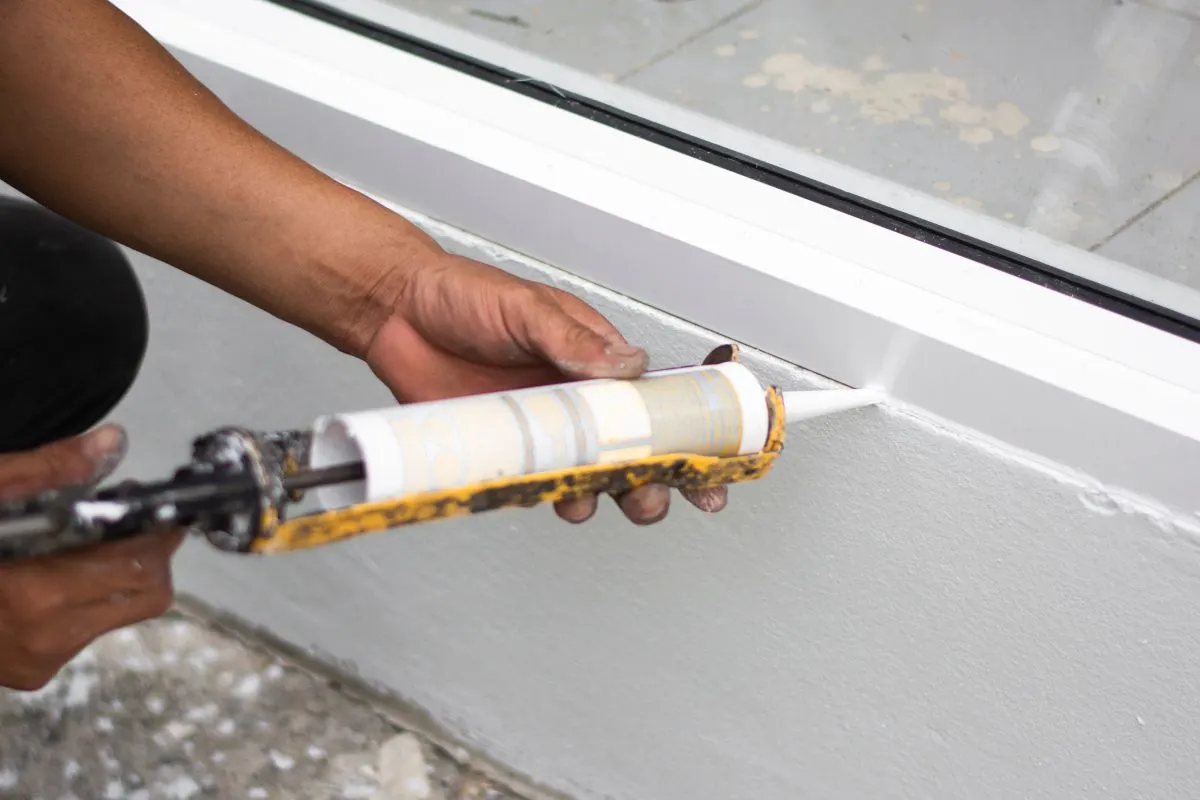
Rubber roofs can leak water into wood structures if they have pin-sized cracks or holes. Verify the barrier’s edges for damage. See if the self-leveling sealant is pulling away from any surfaces. Self-leveling caulking can be used in a caulking gun if necessary.
No matter what kind of roof an RV has, it needs to be caulked once a year. Seal off any spots where an object has been attached to the roof with RV roof caulking. You can purchase caulking on Amazon and it’s not expensive.
After your roof has been cleaned and dried, you can apply EPDM rubber roof acrylic coating and you won’t break the bank. This is fire-resistant and can help keep your roof in better shape for longer.
There are EPDM kits available for DIYers who want to replace their rubber roof with a new one. Dicor sells a kit that includes everything you need to get started.
Keeping a TPO Rubber Roof in Top Shape:
Cleaning should be done using a non-abrasive cleanser and a gentle brush. The rubber roof’s top membrane must be protected at all times. Rinse your feet well after using a cleanser.
Use a hose to thoroughly remove the cleaning solution. The rubber roof should be inspected for cracks or deterioration. Eternabonds can be used to repair skylights, flashings, and chimneys in addition to fusing cracks.
When Should You Inspect an RV Roof for Damage?
Regardless of whether or not the roof has been subjected to heavy winds or hail, it should be inspected for any damage. The roof of your camper or RV can be damaged by low-hanging trees, or you may have scrubbed it a little too hard while cleaning it.
If the roof is in good shape, there’s no need to abort the voyage or spray it with a protective coating. A patch can effectively fix the mess. Every RV or camper’s toolkit should include RV patches. They can be used to seal a rip or a hole created by a branch or clean i tiny space.
They are water-resistant and adhere to adhesive. Patches such as Eternabond are readily available from online retailers such as Amazon. You will feel more prepared for anything if you have these patches with you at all times.
Understanding the Variety Of RV Roof Options
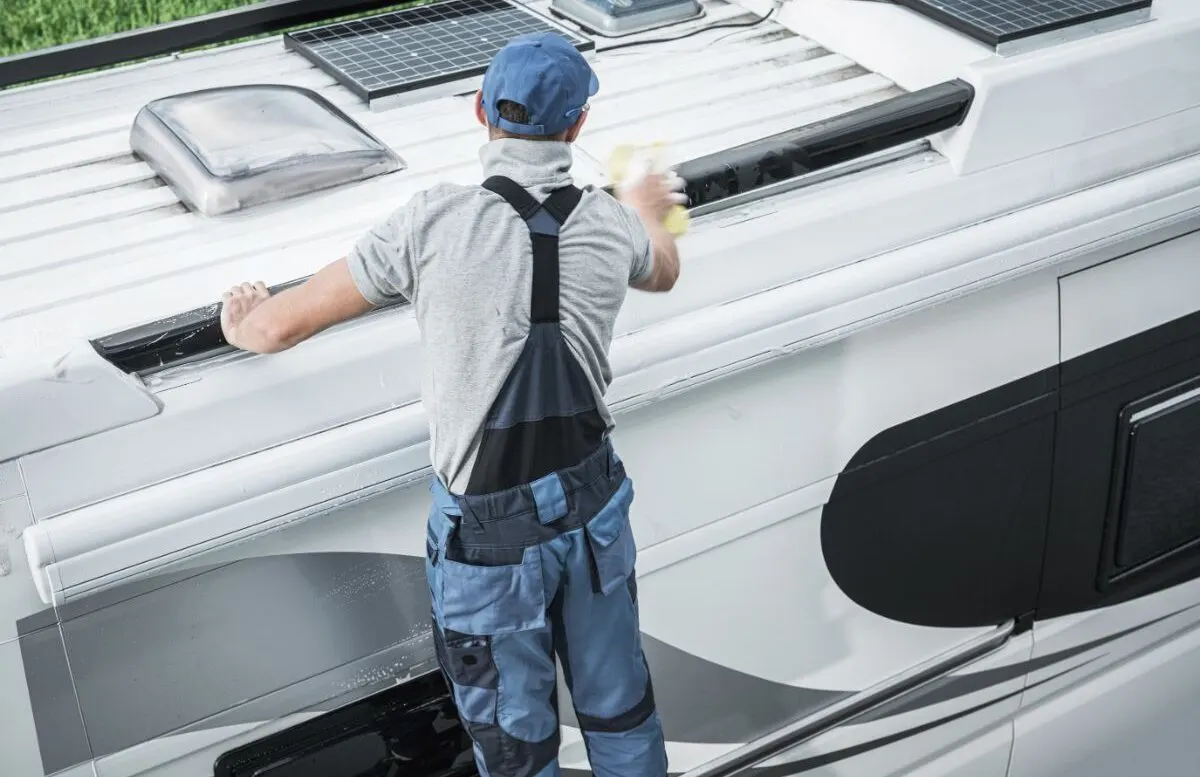
As mentioned earlier, aluminum, vinyl, and fiberglass are also common RV roof materials. Metal and fiberglass roofs can pose a safety hazard.
Support beams are needed for metal roofing. Metal roofs will need you to place your entire body weight on the roof’s support beams when you’re on top of it.
When wet, fiberglass roofs can be extremely slippery.
Whenever wiping down a fiberglass roof or ascending to the rooftop after a rainfall, it is important to exercise safety. It’s possible that waxing a fiberglass roof could make it more slippery. Even if you don’t have a shingled roof, it’s still a good idea to keep an eye on it.
Rubber roofs are becoming increasingly common on newer models of recreational vehicles, so keep that in mind if you own one.
Check if Your RV Slides Needs Rubber Coating
If you’ve already purchased an RV or camper, make sure to inquire about whether the slides have rubber roofing as well. Some manufacturers don’t put rubber roofing on the slides, allowing water to reach the level below.
If your slide-outs need a rubber coating, you can purchase an EPDM set to apply it yourself. Slideout rubber should be cared for and maintained just like any other roof on your camper or RV, even if you don’t need to apply it.
Consider your lifestyle before deciding on an RV or camper with a rubber roof, which has its perks, such as being easier to tow. Remember that no matter what kind of roof you have, it needs to be cleaned, inspected, and repaired regularly.
The rubber covering that makes the RV’s inside dry and comfortable should be cleaned and treated at least once a year to extend the roof’s lifespan. That said, not all roofs are made of the same type of RV roofing material.
With this information, you should be able to figure out what kind of rubber roof your RV or camper has and what kind of cleaning and maintenance it will need, thanks to this knowledge. Even with rubber roofing, it’s better to be safe than sorry.
